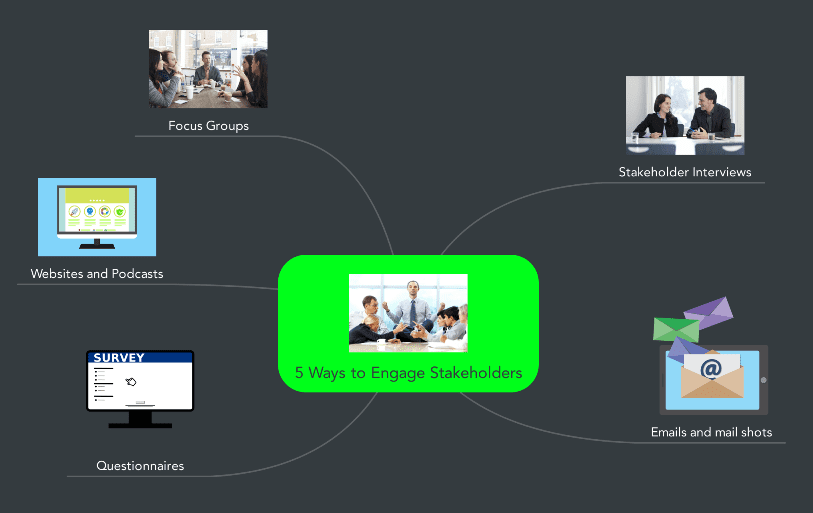
Stakeholder focus groups
Questionnaires
Get a list of questions to help you Identify your Stakeholders.
Get a list of questions to help you analyze your Stakeholders.
Stakeholder Interviews
Get a list of questions to help you Identify your Stakeholders.
Get a list of questions to help you analyze your Stakeholders.
Newsletter/Mail shot/Email
Every project is likely to have large number of stakeholders who fall into the show consideration or least important category (see Step 2: Stakeholder Analysis). These Stakeholders are not highly influential, but they can still cause you problems if you dont keep them informed. Emails, newsletters and leaflets reach a wide audience. They can raise the profile of your project and give you an opportunity to showcase successes. Balance the frequency of communications against the time you have available and bear in mind that some people may not read your carefully crafted letter. Try to piggy back on an existing publication to save time and add credibility to your message.Websites and podcasts
I strongly recommend that every project has a freely accessible shared area where news, information, dates and key documents can be stored. A website or webpage is ideal as you can use it to communicate with all of your Stakeholders - more influential Stakeholders can be given access to privileged areas to complete surveys or attend online focus groups. Like a newsletter you can showcase your success, but in addition stakeholders can access your website any time. They can pull information from your site when they need it rather than you having to push it out to them. Most companies have existing intranet/internet which you can use without needing web design skills. Remember that you need to put aside time to update and market your website. You could also consider using podcasts, keeping a blog or setting up a stakeholder forum.Combining and targeting stakeholder engagement approaches
Each of these approaches has pro and cons when it comes to engaging with your stakeholders. You should combine these approaches and use a channel that is appropriate to the interest and influence of your stakeholder audience. For example: stakeholders falling into the least important category need only be engaged via open days or through the website. It would be a waste of your resources to include them in a focus group. However, those important groups that arent particularly interested may really benefit from involvement in one to one interviews and this might be the only way that you can draw them out. Think about combining these approaches to dig into the detail on particularly important issues. For example, if your survey results show that there are a lot of concerns about a particular area do some more research by interviewing key respondents. If the interviews show that more needs to be done form a stakeholder focus group to address the concerns.Stakeholder Engagement resources
How to guide to Stakeholder Engagement52 Stakeholder Engagement approaches 5 tips on presenting to Stakeholders e.g. 1 ; 6 and free text areas to draw out detailed feedback. Get a list of questions to help you Identify your Stakeholders.
Get a list of questions to help you analyze your Stakeholders.

